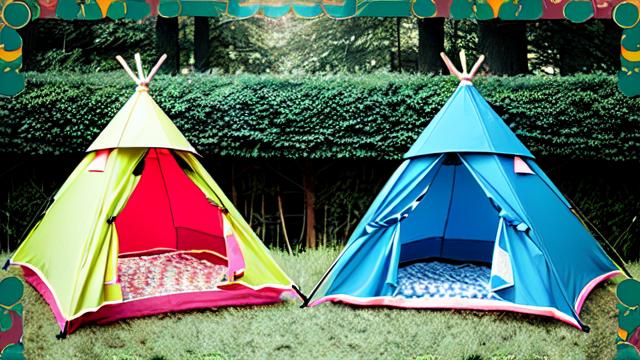Designing a calming and inclusive atmosphere is crucial for children with sensory sensitivities or special needs in the world of sensory-friendly kids play tent.
In our routine, we encounter a massive number of machines daily, creating unwanted noise and cluttering the space. Children who are little learners get distracted by so many sensations happening at a single time.
It is vital to provide kids with a harmonious environment that is controlled and provides sensory requirements necessary for the kid’s minds. An all-inclusive environment prevents children from getting distracted. Kids are immersed in their own thoughts, which improves their imagination and creativity.
This article explores practical strategies to create a soothing environment that addresses their unique requirements. By minimizing external noise, optimizing acoustics, and incorporating sensory tools, we can ensure a comfortable and enjoyable play experience for all children.
Minimizing External Noise
- Soundproofing Materials: Use materials that reduce external noise, such as thick fabrics or foam insulation, to create a quieter play tent.
- Quiet Location: Locating the play tent in a calm area of the room or home, away from noisy appliances or high-traffic areas.
Optimizing Acoustics Within the Play Tent
- Echo Prevention: Considering the materials and layout of the play tent to minimize echoes, which can be overwhelming for children with sensory sensitivities.
- Sound Amplification Control: Using soft materials and furniture to prevent sound amplification within the play tent.
Sensory Tools for Calming and Regulation
- Weighted Blankets: Including weighted blankets or lap pads to provide deep pressure and a calming effect.
- Sensory Swings: Installing sensory swings inside the play tent for vestibular input and relaxation.
Personalization for Individual Comfort
- Flexibility in Layout: Design the play tent with adjustable elements, such as removable walls or customizable partitions, to accommodate individual preferences.
- Comforting Elements: Allowing children to personalize the play tent with their preferred soft textures, cosy seating, or familiar objects.
Encouraging Social Interaction and Inclusivity
- Shared Play Spaces: Designing play tents that can accommodate multiple children, promoting social interactions and cooperative play.
- Sensory Awareness Education: Raising awareness among peers and caregivers about the unique needs of children with sensory sensitivities or special needs, fostering understanding and empathy.
Engaging Sensory Stimuli
- Visual Stimulation: Incorporating visually engaging elements such as colorful fabrics, soft lighting effects, or visual patterns to capture children’s attention and promote sensory exploration.
- Tactile Experiences: Including different textures and tactile materials within the play tent, such as sensory walls with various fabrics or tactile panels, to stimulate children’s sense of touch.
Creating a Safe and Comfortable Environment
- Ventilation and Temperature Control: Ensuring proper airflow and ventilation within the play tent to maintain a comfortable temperature.
- Soft Padding and Safety Measures: Adding soft padding to the play tent’s interior surfaces to create a safe and cushioned environment, reducing the risk of injuries during play.
Promoting Sensory Exploration and Learning
- Sensory Stations: Creating designated areas within the play tent for different sensory experiences, such as a tactile station with textured materials, an auditory station with musical instruments or calming sounds, and a visual station with stimulating visuals.
- Sensory-Focused Activities: Introducing sensory-focused activities that encourage children to engage with their senses, such as sensory bins, play dough, or sensory art projects.
- Sensory Integration Techniques: Exploring techniques and exercises that promote sensory integration, such as deep pressure activities, proprioceptive input, or vestibular stimulation.
Conclusion:
By creating a calming atmosphere in sensory-friendly play tents, we can provide a comfortable and inclusive space for children with sensory sensitivities or special needs. Through strategies such as minimizing external noise, optimizing acoustics, incorporating sensory tools, and personalizing the play tent, we ensure a soothing environment where children can easily explore, learn, and interact. Let us embrace these design principles to promote inclusivity and enable all children to enjoy the benefits of playtime in a sensory-friendly setting.









